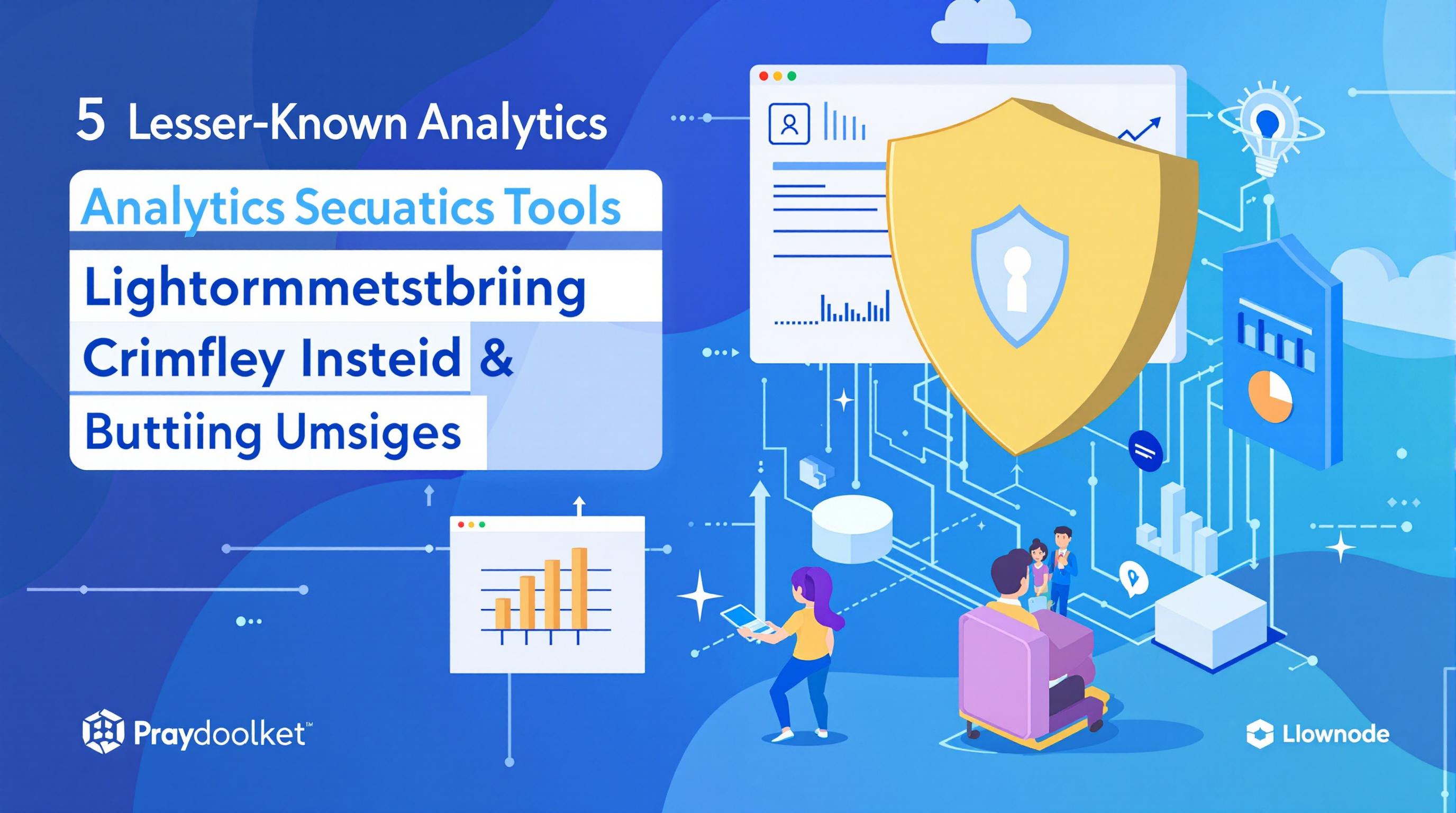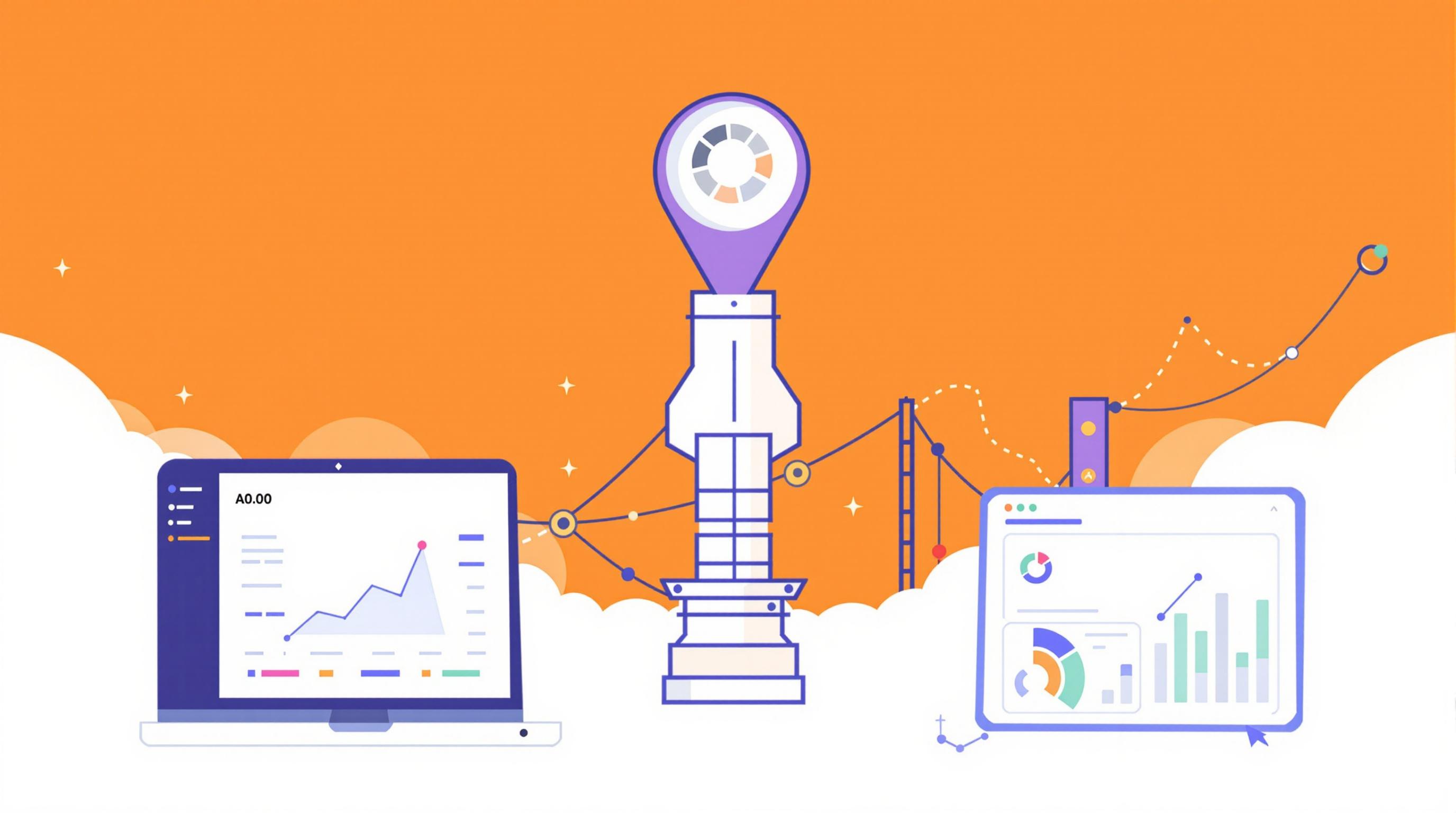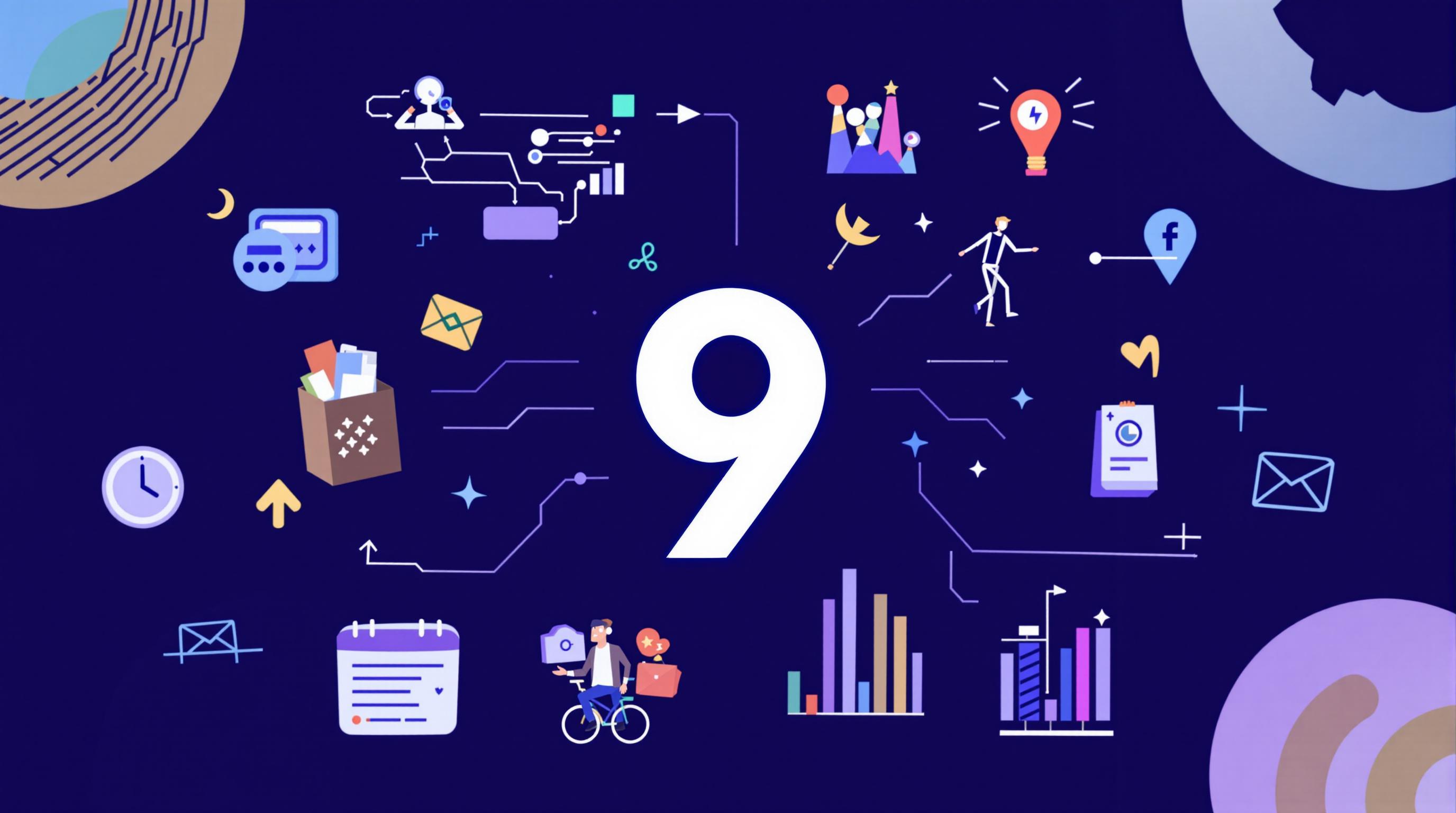Related Articles
- Top 6 Next-Gen B2B SaaS Engines Shaping Retention With AI-Powered Predictive Insights Since 2019
- Top 6 Emerging SaaS Onboarding Platforms of the Last Five Years That Actually Boost User Stickiness
- Top 8 Under-the-Radar Analytics Tools Launching Since 2019 That Outperform Big Names
- Top 7 Next-Gen Workflow Automation Platforms Revealed Comparing Game-Changing Features from the Last Five Years
- Top 6 Next-Gen Endpoint Security Solutions Since 2019 That Outsmart Modern Cyber Threats
- The Unseen Ripple Effect: How Obscure API Endpoints Influence Global Data Ecosystems in Unexpected Ways
5 Lesser-Known Analytics Tools Enhancing Data Security and Privacy Compliance in Modern Enterprises
5 Lesser-Known Analytics Tools Enhancing Data Security and Privacy Compliance in Modern Enterprises
5 Lesser-Known Analytics Tools Enhancing Data Security and Privacy Compliance in Modern Enterprises
In today's digital age, enterprises face mounting pressure to secure data and comply with rigorous privacy regulations. While giants like Splunk and Tableau dominate analytics discussions, several lesser-known tools are making significant strides in bolstering data security and compliance. These tools not only offer innovative approaches to analytics but also help organizations navigate the complex landscape of data privacy with greater confidence and agility.
This article explores five such tools, delving into their unique features and how they enhance security practices and compliance efforts in modern enterprises. By integrating these tools, businesses can strengthen their defenses against cyber threats, streamline regulatory reporting, and gain deeper insights into data usage patterns — all crucial to maintaining trust in a data-driven world.
From real-time monitoring to advanced anomaly detection, these analytics platforms provide powerful capabilities that complement traditional security frameworks. Let's examine each tool's contribution to the evolving ecosystem of data security and privacy compliance.
1. Varonis DatAdvantage
Varonis DatAdvantage specializes in data access governance by analyzing file activity and permissions across enterprise networks. It identifies risky data exposure and evaluates who can access sensitive information, thereby mitigating insider threats and potential data breaches.
One of DatAdvantage's standout features is its ability to visualize data access in real time, presenting a clear picture of user behavior and anomalies. This granular insight helps security teams proactively respond to suspicious activity before it evolves into serious incidents.
Additionally, DatAdvantage integrates with compliance standards like GDPR and HIPAA, providing automated audits and reports that streamline regulatory obligations. By combining access analytics with compliance workflows, it ensures that data security does not come at the expense of business agility.
2. Exonar
Exonar offers powerful data discovery and classification capabilities that automatically map sensitive data across complex IT environments. Many enterprises struggle to locate all instances of personal or confidential information; Exonar addresses this challenge by making hidden data visible.
Its advanced AI-driven analytics enable organizations to categorize data based on content, context, and risk level, empowering targeted security measures and compliance controls. This visibility is especially vital under regulations requiring strict documentation and management of personal data.
Moreover, Exonar's user-friendly dashboards provide actionable insights, reducing reliance on manual audits. Businesses gain confidence in their data hygiene and readiness for privacy assessments, minimizing regulatory risks and potential fines.
3. Netwrix Auditor
Netwrix Auditor offers comprehensive auditing and monitoring of IT infrastructure changes, user activity, and data access. Its analytics deliver critical clarity into who did what, when, and where — a necessity for both cybersecurity and compliance.
This tool’s robust alerting system notifies administrators of risky behaviors or policy violations in real time, enabling swift incident response. It supports compliance mandates such as SOX, PCI DSS, and CCPA by generating detailed, customizable reports that document adherence.
Netwrix's compatibility with diverse platforms and systems allows enterprises to consolidate security analytics, breaking down silos that often impede comprehensive oversight of privacy and security postures.
4. BigID
BigID employs machine learning and data intelligence to unearth sensitive data and identity-related information across cloud and on-premises environments. Its focus centers on privacy compliance, offering data lineage, risk scoring, and automated policy enforcement.
The platform excels at mapping data subjects and their associated records, facilitating rights management tasks like data access requests and erasure under GDPR and CCPA frameworks. This level of detail aids enterprises in demonstrating compliance rigorously and transparently.
BigID’s analytics engine continuously monitors evolving data landscapes, adapting to new risks and regulatory changes. By reducing manual oversight, it helps organizations maintain a proactive stance toward data protection in highly dynamic settings.
5. ObserveIT (acquired by Proofpoint)
ObserveIT specializes in user behavior analytics, focusing on insider threat detection through continuous monitoring of endpoints and data interactions. Its analytics pinpoint abnormal activities, helping security teams discern genuine risks from false positives.
Beyond threat detection, ObserveIT facilitates forensic investigations by recording user sessions and activity logs. This forensic capability enhances accountability and aids incident remediation in compliance with regulatory requirements.
Integrated with enterprise security stacks, ObserveIT enhances existing analytics frameworks by providing nuanced visibility into human factors, a critical vector in data breaches. This holistic approach supports a mature data security and privacy strategy.
6. Why Lesser-Known Tools Are Gaining Traction
While industry titans offer powerful solutions, niche analytics tools often deliver specialized capabilities tailored for complex privacy environments. Their agility in adapting to new regulations and technologies makes them valuable additions to enterprise security arsenals.
Moreover, these tools frequently provide cost-effective alternatives or complementary functionalities to larger platforms. Enterprises seeking to optimize ROI while addressing unique compliance needs increasingly consider these options.
In many cases, lesser-known tools pioneer innovations faster than mainstream players, enabling early adopters to gain competitive advantages in securing data assets and maintaining regulatory adherence.
7. Integration Challenges and Considerations
Despite their benefits, integrating these specialized analytics tools requires careful planning. Enterprises must ensure seamless interoperability with existing IT infrastructures to avoid data silos and gaps in security visibility.
Data privacy considerations also dictate cautious deployment, emphasizing the need to configure tools with appropriate access controls and encryption during transmission and storage. Compliance teams must validate that new solutions meet internal and external audit criteria.
Vendor support and scalability remain critical factors; businesses should evaluate long-term viability and roadmap alignment with evolving privacy laws to prevent costly transitions later.
8. Real-World Success Stories
Several enterprises have leveraged these tools to enhance data governance amidst stringent regulatory climates. For instance, a financial services firm reportedly reduced insider threat incidents by 40% after deploying Varonis DatAdvantage’s monitoring capabilities.
Another healthcare provider credited Exonar with significantly accelerating their GDPR compliance efforts by automating data inventory processes that previously took months to complete manually. Such case studies underscore the practical impact these tools can deliver.
Similarly, organizations combining Netwrix Auditor and BigID have improved their audit readiness, alleviating traditional bottlenecks in compliance reporting while deepening data insights critical to risk management strategies.
9. Future Trends in Analytics for Data Privacy
Looking forward, the integration of artificial intelligence and automation will further transform analytics tools for data security and privacy compliance. Predictive analytics and adaptive policies will help enterprises anticipate threats and dynamically adjust controls.
Emerging technologies like blockchain may also augment transparency and traceability in data handling, complementing current analytics frameworks with immutable audit trails that enhance compliance credibility.
Additionally, increased regulatory convergence worldwide will drive demand for unified analytics platforms capable of addressing diverse legal requirements under a single pane of glass, simplifying global privacy management.
10. Conclusion
Navigating data security and privacy compliance in modern enterprises demands nuanced analytics beyond conventional solutions. The five tools discussed highlight innovative ways organizations can discover, monitor, and protect sensitive data more effectively.
By adopting these lesser-known analytics platforms, businesses not only enhance their defensive postures but also streamline compliance workflows, reduce risk exposure, and foster a culture of accountability that aligns with contemporary regulatory demands.
Ultimately, the evolving data landscape calls for a multifaceted approach where diverse analytics tools work in concert — empowering enterprises to safeguard information assets while maintaining operational excellence.
Sources:
Varonis DatAdvantage – https://www.varonis.com/
Exonar – https://www.exonar.com/
Netwrix Auditor – https://www.netwrix.com/
BigID – https://bigid.com/
ObserveIT – https://www.observeit.com/




